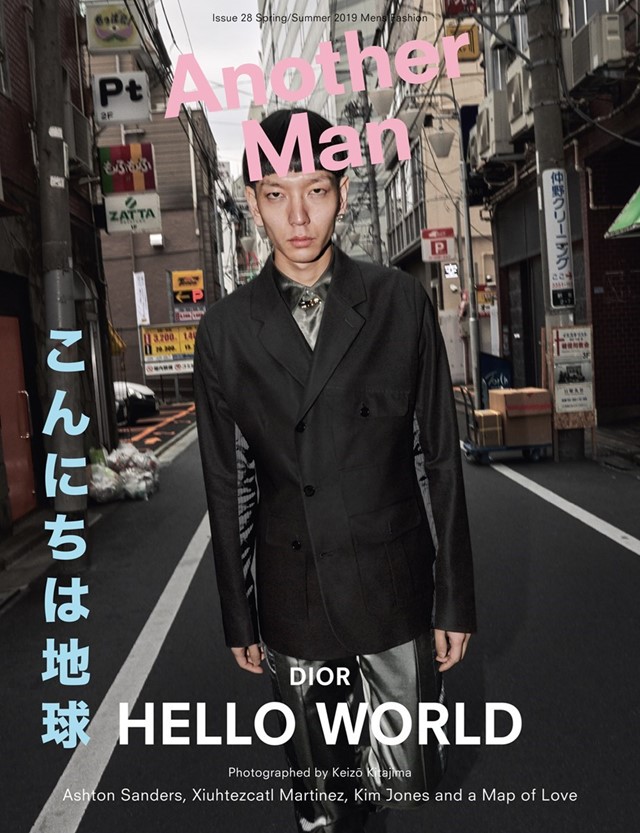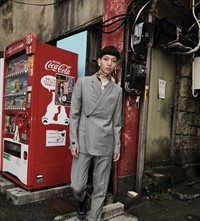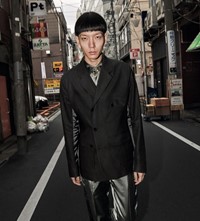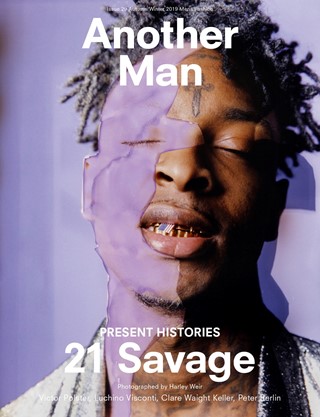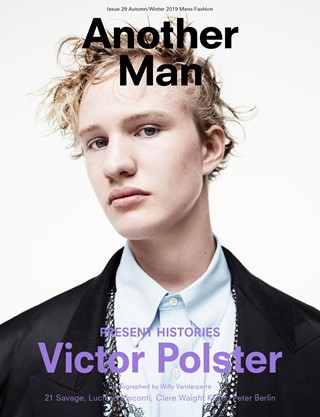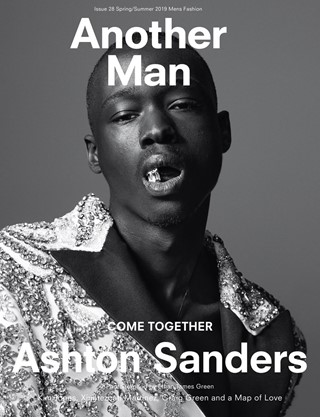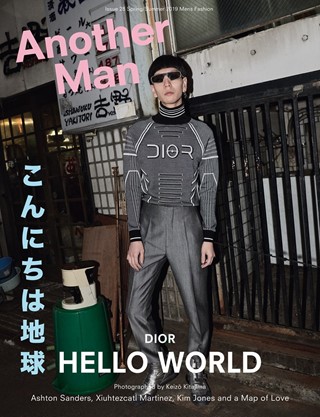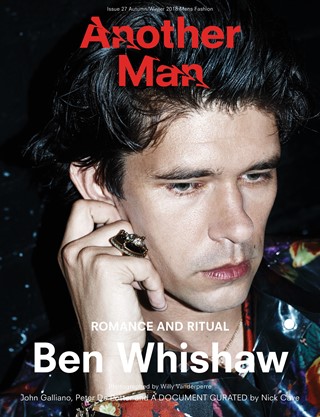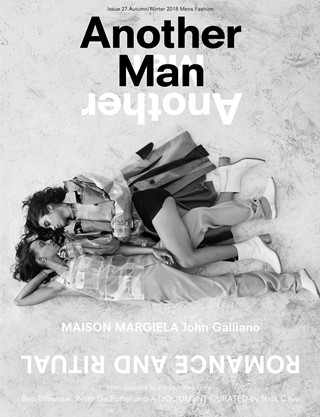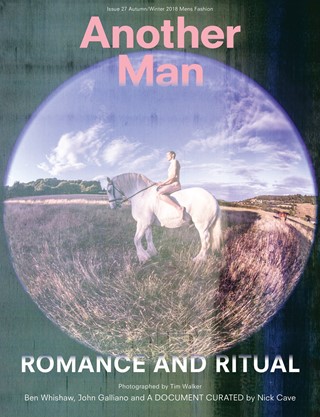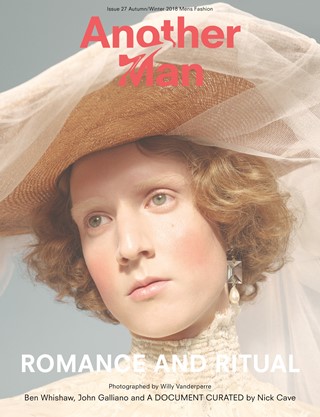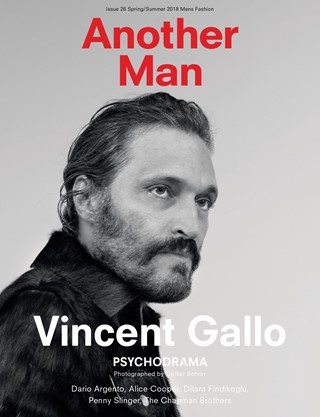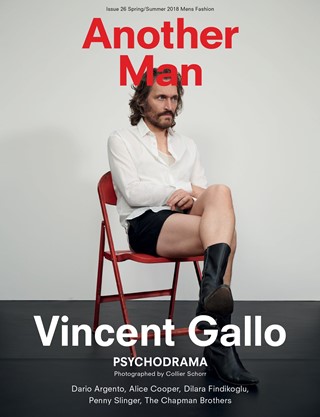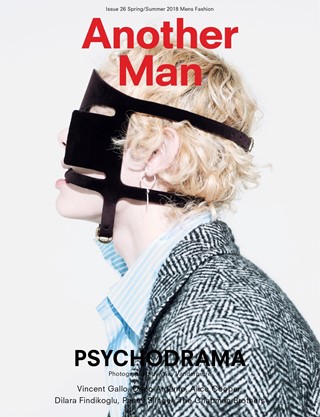Dior | Hello World
Kim Jones HAS ALWAYS FELT THE PULL OF JAPAN. ITS STRANGE BREW OF FANTASY-FUTURISM, SUBVERSION, TRADITION AND ULTRA-NERD FANDOM DRAWING HIM BACK YEAR AFTER YEAR, FEEDING HIS CREATIVE VISION. SO WHEN IT CAME TIME TO STAGE HIS PRE-FALL COLLECTION FOR DIOR – HIS SECOND SHOW AS THE HOUSE’S MENSWEAR ARTISTIC DIRECTOR – WHERE ELSE BUT TOKYO? CUE A LASER-FRENZIED SPECTACLE OF STEELY SUITING, KIMONO JACKETS, HIGH-TECH HARDWARE AND ONE GIANT METALLIC SEXBOT.
BACK IN LONDON AND FRESH FROM HIS TOKYO TRIUMPH, Jones EXAMINES HIS LIFELONG OBSESSION WITH THE LAND OF THE RISING SUN...
“I blame Keiko. She was my friend when I was seven or eight and she introduced me to Hello Kitty. That was my first experience of Japan. I was quite impressed because Kitty was cute and unlike anything I’d seen before. Fast forward a few years, I’m a teenager, reading magazines and seeing the amazing street style things coming out of Tokyo. I was properly seduced.
I worked at Michael Kopelman’s agency Gimme Five when I was in college. A Bathing Ape had been going for a bit and it was a huge cult in Japan, but you couldn’t get it for love or money in England. Through Michael, I met Nigo from BAPE, and Hiroshi Fujiwara and Jun Takahashi from Undercover, and I got to know magazines like BOON. I kept them all. I used to go through them at my old place with Kanye and Virgil.
Michael was always really kind and gave us loads of stuff so we were wearing everything. And obviously I was aware of Comme des Garçons, Yohji, Issey Miyake from The Face and i-D and going to department stores. I remember a white Comme shirt with pearl buttons. Things like that stay with you.
When I left college, I did an exhibition of my graduate collection at The Pineal Eye. Nicola Formichetti was working there then. And Yuko. That was another link to Japan. John Galliano bought a lot of my stuff. Michael Stipe did too. And people like Honey Dijon were freaking out over all my Chicago rave flyers and records, wondering who the hell this obsessed collector was. There was a guy called Alex at Gimme Five who used to play lots of Ron Hardy and Larry Levan, and we went out to record fairs on the weekends because that was the only way to do it. Proper completist nerds.
It was around that time, in 2001, that I went to Japan for the first time. My sister gave me a ticket on Virgin air miles as a present for finishing college. She was there for a couple of days. Then I was by myself for a week, lost in translation. I found it really hard. Didn’t know anyone or how to get around. No signs in English. Not much money, though I found Undercover and Bathing Ape and managed to buy a T-shirt and a pair of socks. It was exciting to go into convenience stores and all that, but it was overwhelming to be on my own. And it was November, so it was windy and cold.
The next time I went, it was spring, I was with lots of friends – Magnus, Nicola, Koji – and I completely fell in love with Tokyo. We did a shoot for Dazed Japan. By then, I was selling in a few places, just printed T-shirts, which was all I could afford to do, but I was getting a bit popular, which meant I had access to things people wouldn’t normally get to see. There’s that thing about the Japanese that they really take something on when they can relate to it. And they related to me. People understand me because I’m quite easy to understand. I think it helped that my name was easy to say. It’s funny, when I do a signing now, there are people who’ll bring in things I did right at the beginning. They’re very completist in their approach. Just like me, the way I scour the world for the things I want. I got a nice Frank Sinatra painting the other day.
I saw that impulse with Nigo and Hiroshi and Jun, and the way they collected. Nigo’s place was like the best vintage shop you could ever go to, 40 of each thing in perfect condition – Americana, lots of toys, rare KAWS things, a cold store for his clothing collection. All perfect. He auctioned off his Star Wars collection recently. He had every single figure in every single permutation.

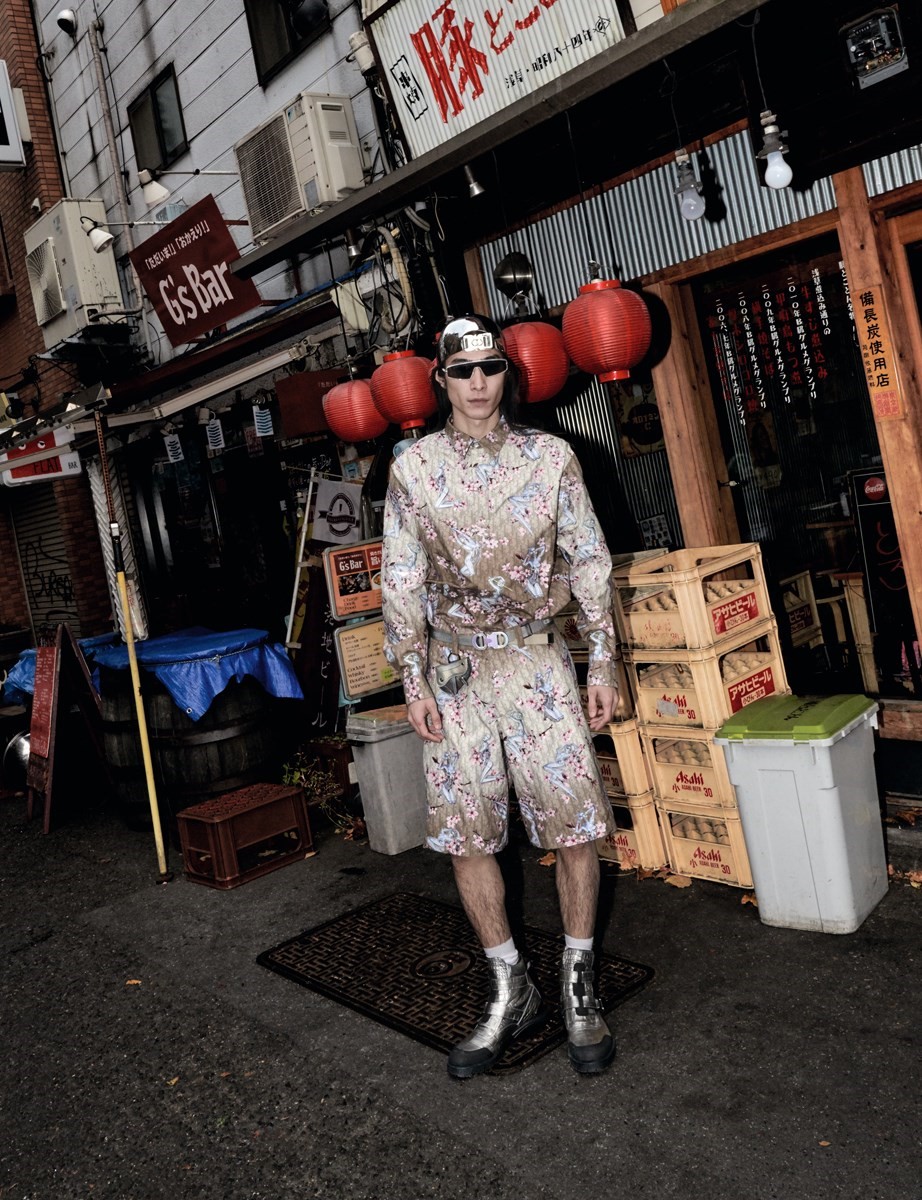
From the beginning, what fascinated me about Japanese style was the way they mixed things up. In London, there were fashion tribes of different people going to different clubs. In Tokyo, they had those too, but it was mixed up. Going shopping was such a big part of the culture. They’d buy really expensive clothes and wear them with vintage jeans or cool Nikes. A completely open, forward-thinking mix of past, present and future fashion culture. Taking something vintage or American and making it better than it was, combining tradition and technology. The fabrics were great, I was always impressed by the details on everything. It was a good way to work and to make things, and it became something I felt I wanted to do.
I think a lot of what I do is also based on how I saw Nigo working with Jun, and Jun working with Hiroshi, all those people cross-pollinating, skating, doing each others’ graphics. There was a sense of community and a work ethic there I found really interesting. Not like anywhere else. Rei Kawakubo supports a lot of designers who have come out from underneath her. It’s nice to work with people. I know how I like to get people going and inspired and enjoying what they do.
So Japan was an aspirational idea for me, though I took a slightly different approach. I’ve travelled so much since I was very young that I feel I look at things more globally. And I don’t think in the same way because I’m a really commercially-minded designer. I’m interested in technique and quality, in the kind of finesse and the ridiculous details you can only achieve at places like Dior and Vuitton, but you have to keep the balance right between creating beautiful things and knowing where and how to sell them. I have a good editing eye. It helps to respect the brand.
But what I didn’t know about Dior is how much backwards and forwards there was between Christian Dior himself and Japan. It was so easy to get inspired by that, the meshing of two rich traditions. Mr Dior visited a few times, and had friends in Tokyo. He’d design specific things for Japanese clients, or princesses in Cambodia or Vietnam, and bring the ideas back for his collections in Paris. He liked Japan so much that I realised it felt right to do a show in Tokyo. That link was really important to me, because it gave an authenticity to what we were doing, especially with other people showing their pre-collections all over the world. I think of culture in the immediate sense of: ‘People like this right now, so let’s do this.’ It’s got to be authentic though. What would Mr Dior be looking at if he was here?
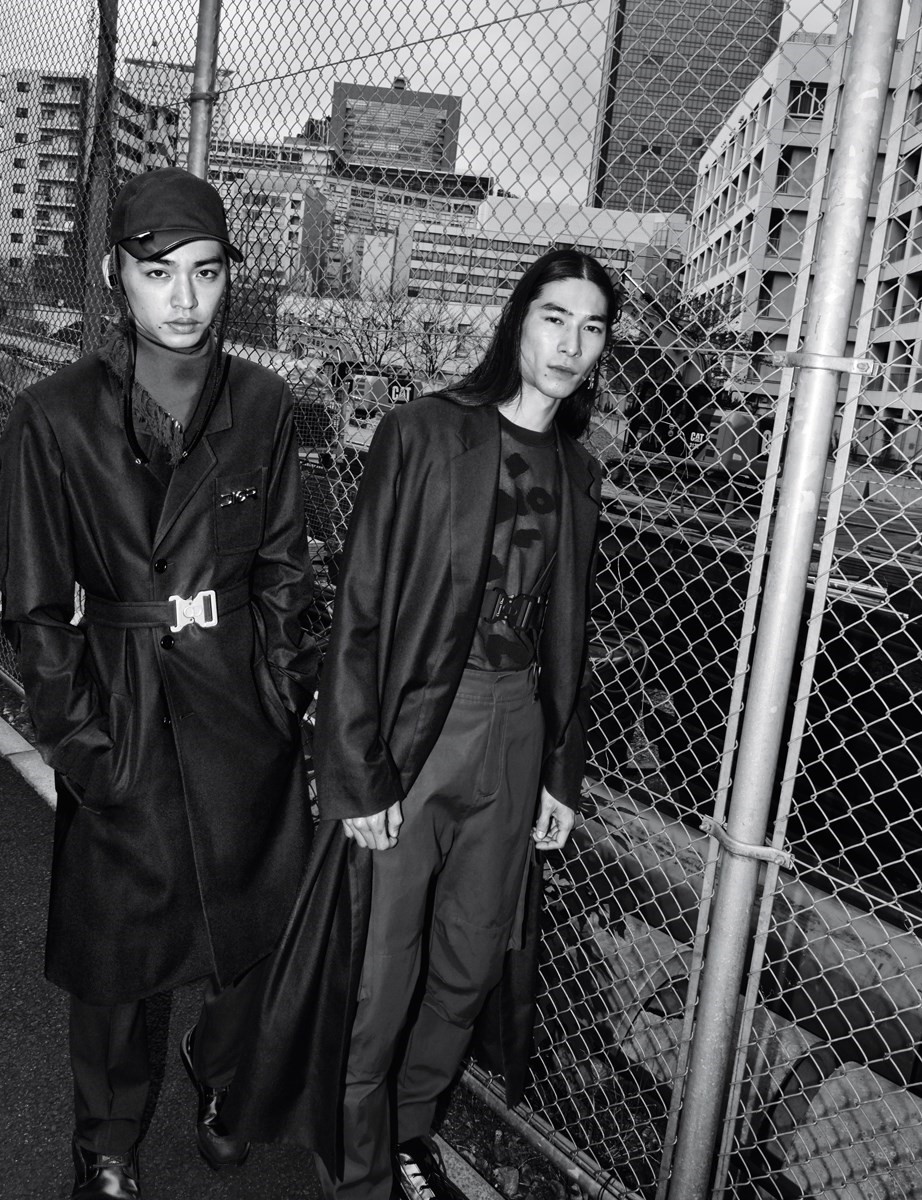

I must have been to Tokyo a hundred times since my first trip. I know it so well I feel I could live there. When I first went, you hardly ever saw any other Western faces, but it’s really opened up. It still has the same mood though, which I like. I’d call it optimistic. I always stay at the Aman. You feel like you’re in the future, hanging high above the city. Or rather, it’s an imagining of the future, almost a nostalgia for the way you once wanted the future to be, if that makes sense. It’s a crazy space, glass and metal, with a huge foyer that’s paper! Quite Star Wars-y, which is another reason I like it. In Korea and China, you see that in bits, but when you look out the window in the Aman in Tokyo, it’s total. The city goes on for miles and miles. It’s like Blade Runner. I’ve watched a lot of Japanese films, but Blade Runner feels to me like the most Japanese of them all, the way it sucks you in. Japanese television is the same. I don’t know what’s going on. Still, I find it very relaxing. There’s always a cute red panda programme, or some weird gameshow where they’re all putting on make-up. I get transfixed. There is something wild, slightly unhinged about a lot of Japanese culture. A savage escapism on the one hand, a quiet rebellion on the other. The politeness is kind of incredible.
There are a few other key cultural totems that I have a more ambiguous relationship with. Food, for one. I’m not a serious foodie so I can’t recommend restaurants. I’ll eat anything except uni. And I’m not really into noodles. And I hate wasabi. I can’t deal with that heat. My favourite thing is buta no kakuni, well-cooked pork belly in a delicious sauce. I like Muscat energy drinks, which have a peculiar gel-like texture that I find rather appealing.
Second, I’m not very good at karaoke. A slow draggy sing-along is not my idea of a night out. One time when I was with my friend Yoon from Ambush, we did cosplay karaoke. That was fun. My song is always Guilty by Barbra Streisand.
Then there’s shopping, an entire universe in itself in Tokyo. Online shopping has yet to dent the Japanese enthusiasm for the actual physical experience. The design, the attention to detail, the mix of avant garde and street, it all means there is so much you can’t get anywhere else. It’s mindboggling how much work there is from new brands. There just aren’t the resources or the manufacturing to do that in other places. I love Isetan, Sacai, Ambush, Comme, Undercover, Fragment, Neighbourhood, Kapital, BerBerJin for vintage, Tsutaya for books... lately I’m really into Peel & Lift, who do these incredible punk bondage pants. But you can go into any little store and find something, even if my size is usually sold out. I’ll buy things I can’t wear just because they’re so beautiful. Like Junya Watanabe’s outerwear. And I like that stores stay. They don’t close down that much in Tokyo, so when you go back to a place, it’s still there, with the same people and the same kind of stuff. That happened with Christopher Nemeth, a London designer I love who moved to Japan in 1986. Since his death in 2010, his business has grown and got stronger, with his wife and his daughters running it. It’s nice to see that. Shoppers are very loyal. There’s an innate respect for creativity and artisanship.
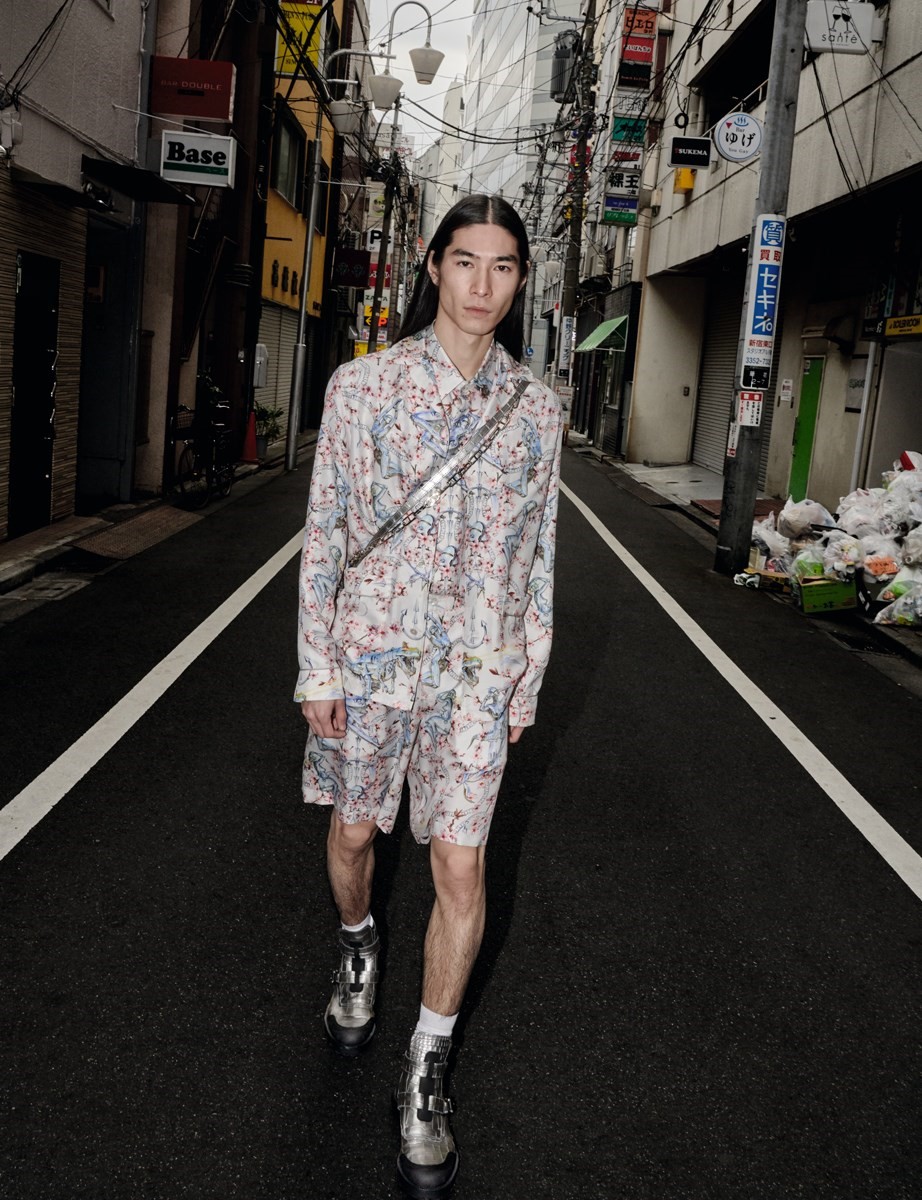
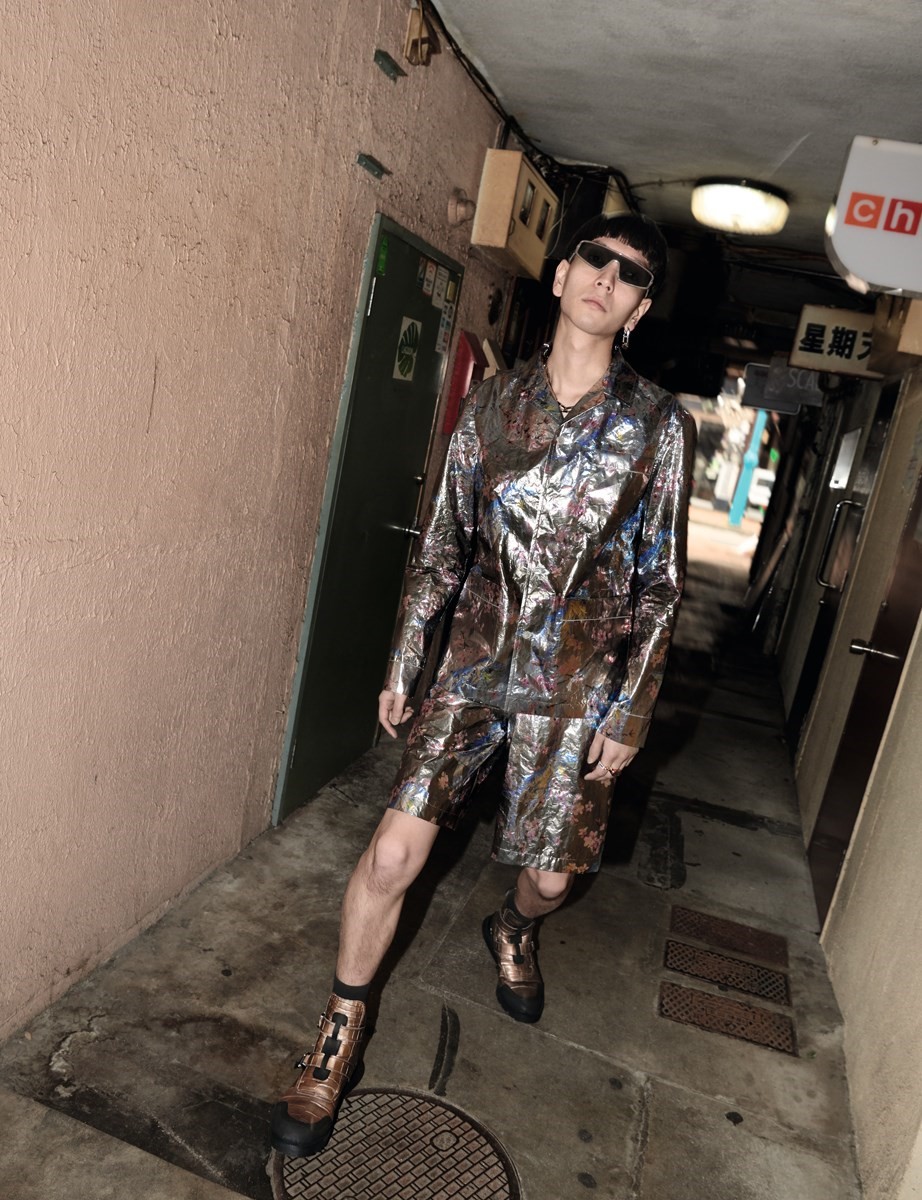
I think every designer looks at the people around them and that’s who they design for. But there’s just something different about Tokyo. Things look cooler. You get all different kinds of people wearing the clothes and they look great. Go into the Comme store in Aoyama and look at the guys in there. With my own label, we had fun and did some really crazy stuff, but I work to a different brief now. It’s a compromise with what we associate people wearing day-to-day. Compare that with what people would wear day-to-day in Tokyo. It’s very different. Designers there want people to fit with them, rather than them fitting with people. That’s why designers like Chitose Abe at Sacai and Jun Takahashi at Undercover are their own best advertisements. No compromise.
So what’s my problem? It’s the ritual of shopping. It’s so slow. I’m a very speedy shopper: in, out. In Tokyo, there’s a whole process. The presentation, the purchase, the packing... I don’t like the waste of all the extra stuff. I know it’s not only a Japanese issue, and I’m sure most people appreciate the attention and the meditative moments spent standing at the till. Not me.
I like to make precious things but without a precious attitude. Some of the things that are really precious are quite twisted, subversive in a weird way, without being pretentious. I think that’s sort of Japanese. The idea of subversion is very Japanese. Very English too. That’s why the Japanese love Vivienne Westwood so much. You used to see all the Japanese kids in London buying tons of Westwood, rich Japanese students who’d come to learn English wearing every look, in every colour. Running round the house in rocking horse shoes.
There’s an obvious reason for the umbilical connection between London and Tokyo. They’re both hubs of island nations, literally insular – not in the bad sense of that word, by the way – pressed-for-space social laboratories with a heady street culture as a kind of ongoing experiment. Ingredients for a curatorial approach to life. I know that whole notion is already a modern cliché, but it’s at the root of the acute style sensibility that has made London and Tokyo such hugely influential fashion cities. I already said I’m an obsessive collector. I have that in common with many of my Japanese friends. Like them, my obsessions feed my work. Maybe I can even thank Japan for showing me how to do it properly.”
GROOMING Takeshi using Bumble & Bumble MODELS Hisaki Hayashi at Bravo Models, Shun Kawachi at B Tokyo, Makito Uchida at Light Management PHOTOGRAPHIC ASSISTANTS Kouta Kishi, Takurou Yoshikai STYLING ASSISTANTS Jordan Duddy, Kaeko Shabana, GROOMING ASSISTANT Minori Kato PRODUCTION HK Productions
